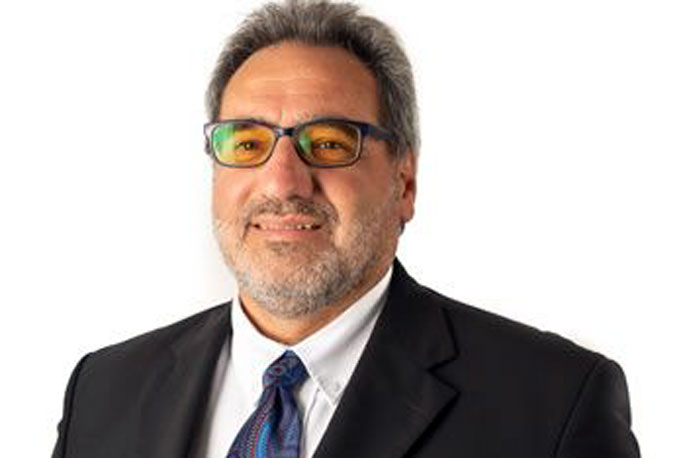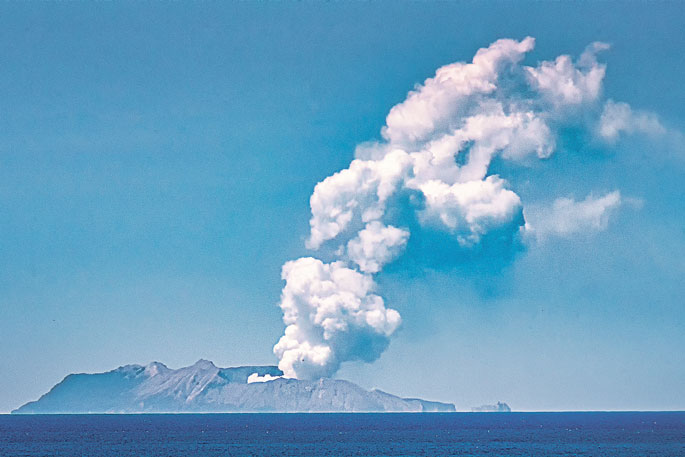Whakatāne Mayor Victor Luca says a lack of monitoring of Whakaari-White Island is putting the whole Eastern Bay community at an increased risk in the case of a major eruption.
During increased activity on the island recently, he wrote a letter with his concerns to Prime Minister Christopher Luxon and relevant ministers.
It was co-signed by other Eastern Bay mayors, Ōpōtiki district’s David Moore and Kawerau’s Faylene Tunui, raising these concerns.
The letter asked for ministerial intervention to allow GNS Science to have access to the island to install monitoring equipment.
Dr Luca says he was first made aware of the absence of on-island monitoring at a Bay of Plenty Emergency Management Group meeting in April.
GNS Science principal scientist Graham Leonard, in an article published in May, said a lack of access to the island since the December 2019 eruption meant the last functioning seismo-acoustic station there stopped working completely in August 2022.
He said without on-island monitoring, the organisation’s ability to detect and confirm eruptions at Whakaari was limited.
All monitoring of the volcano was now done remotely through stations on the mainland, observation flights, and satellite technology.
Dr Luca says the eruption that killed 22 people in 2019 was considered a relatively minor one.
If there is a major eruption on Whakaari it will have serious consequences for people on the mainland due to the effects of ash, he says.
“We live not very far off the coast of quite an active volcano which has been, throughout its history, reasonably tame. We haven’t had volcanic eruptions that have covered the mainland in ash.
"When I was living in Argentina, a volcano went up in the Andean mountains and some ash was received in Buenos Aires, which is about 1400 kilometres away. Nearby towns had ash up to their knees in some places.”
Whakaari is just 48 kilometres from the mainland.
 Whakatāne Mayor Victor Luca has asked government ministers to intervene to expedite the placement of GNS monitoring on the island.
Whakatāne Mayor Victor Luca has asked government ministers to intervene to expedite the placement of GNS monitoring on the island.
“Any volcano can go off at any time with no notice but by monitoring we can have a chance of getting some notice,” says Dr Luca.
“The beast has been well behaved for a long time and I hope it stays that way.
"If there’s a method of getting advanced notice we should have it. It’s an existential threat for the town. When they’re not monitoring it, our risks are enhanced.”
Dr Luca says he received a response from Minister of Emergency Management Mark Mitchell thanking the three mayors for their “diligence and concern” on behalf of their communities.
Mitchell agrees with the concerns raised and has asked the National Emergency Management Agency to provide him with advice on how to expedite the placement of GNS monitoring on the island.
Multi-agency work was taking place, which included NEMA, Department of Internal Affairs, Ministry of Transport, Civil Aviation Authority, GNS Science, Emergency Management Bay of Plenty, Bay of Plenty Regional Council.
The group also plans to invite Ngāti Awa to join.
LDR is local body journalism co-funded by RNZ and NZ On Air.




1 comment
No record of ash
Posted on 05-07-2024 13:11 | By SonnyJim
Some time ago I read a scientific paper that said that there was no detectable Wakaari ash on the mainland, so historically, the island is benign. That information, and the rarity of onshore winds from the island that could bring falling ash to the coast makes the island very low risk. RE: Monitoring - given the power of four bladed drones, a monitoring package could be placed on the island from 20km distance. Ballast for a monitoring rig can be rainwater in a 500l low-profile tank delivered empty, filled and topped up from a collection cover, with the monitor secreted underneath it.
Leave a Comment
You must be logged in to make a comment.